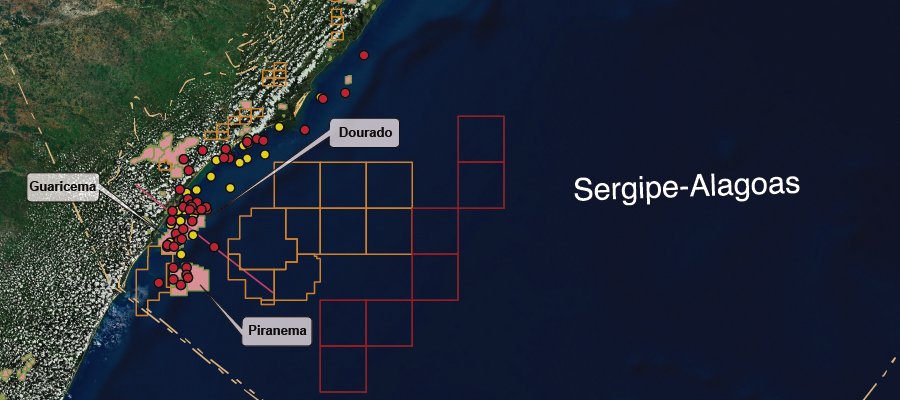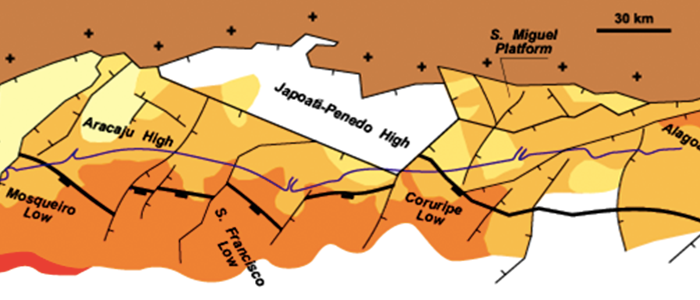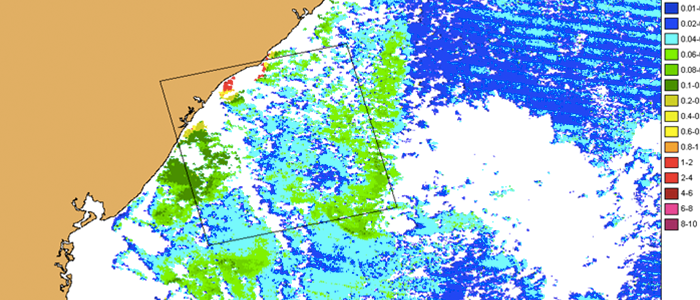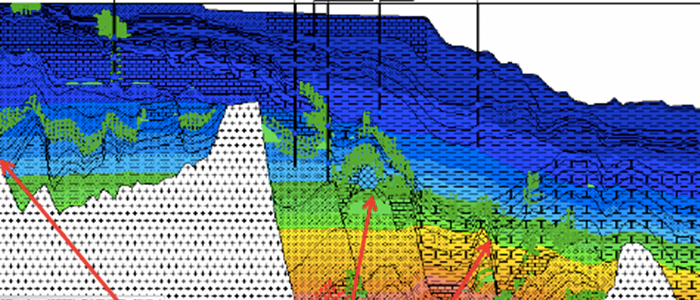Multiclient
Sergipe-Alagoas
Home / Multi-client / Sergipe-Alagoas
Bid Rounds
Multiclient studies available for the upcoming Bidding Rounds
Multi-client
Ongoing Multi-Client Studies
Studies for specific regions
Atlas

Sergipe-Alagoas basin is located on northeast Brazil and stretches over 44,370 km². It has the most complete stratigraphic record among the eastern Brazilian marginal basins, with sediments of the pre-rift, rift, transitional and drift sequences. Hydrocarbons have been accumulated throughout the stratigraphic column. Thus, there is a number of plays in the basin, and recent deep-water discoveries in the passive margin sequence (Upper Cretaceous Play – Calumbi Fm.) becomes, at the moment, as the most important and attractive play in the basin. Currently there are 31 production fields in the basin, providing an average production rate of ~ 24 Kbbl/day of oil and ~2.7 Mm³/day of gas.
Recent discoveries of light oil, with estimated resources greater than 1.5Bn Boe, in ultra-deep water region reveal the presence of a new oil province in the basin Those discoveries were made by Petrobras, since 2012.
The Sergipe-Alagoas basin has three active petroleum systems: a lacustrine sequence (Barra de Itiúba Fm.), a transitional/ marine sequence (Muribeca Fm.), and a marine sequence (Riachuelo Fm.). The source rocks are of good quality with high potential for oil and gas generation. Reservoirs vary substantially in the basin. There are Aptian to Barremian sin-rift sandstones; fluvial and eolian sandstones of the pre-rift Serraria Fm. Despite not common, fractured basement holds considerable volumes, as seen in the Carmópolis field. The recent discoveries made in ultra-deep water revealed turbidite sandstones, of Upper Campanian age, with good quality reservoir quality.
The studies carry abundant oil geochemistry data providing a good insight on the fluids of the different petroleum systems. The presence of abundant oil slicks in deep to ultra deep waters settings provided by the Radarsat report will provide initial choices to select favorable blocks. These set of studies will be a good foothold to geologists and geophysicists that will face the great challenges of ultra deep water exploration, as oil generation varies across the basin and oil vertical migration into younger reservoirs sections also places its own difficulties.
- Sergipe-Alagoas Products

Volume I The study is a complete work for the Sergipe-Alagoas offshore basin providing geoscientists with different approaches to decipher the petroleum systems, where the elements and processes (source, oil, trap, reservoir and generation, migration and accumulation) are considered today …

Satellite Radarsat-1 fine detection and use to characterize areas of oil seeps is considered today a strategic technology for exploration in frontier basins were geophysical and geological data are scarce or non-existent for all major petroleum E&P companies. The application …

he petroliferous offshore Sergipe Basin in Brazil has attracted exploratory efforts for oil and gas for a long time since the first discoveries were made there in the late 20th century. Recently, new giant discoveries have been made, located in …
